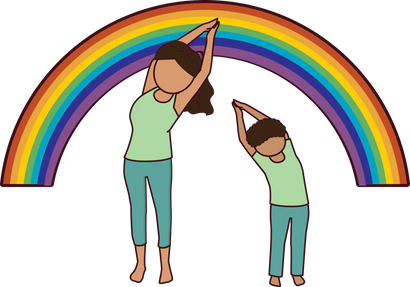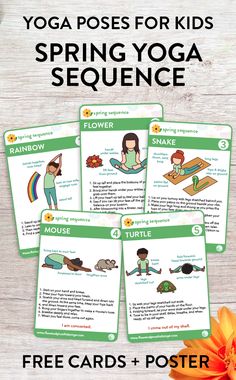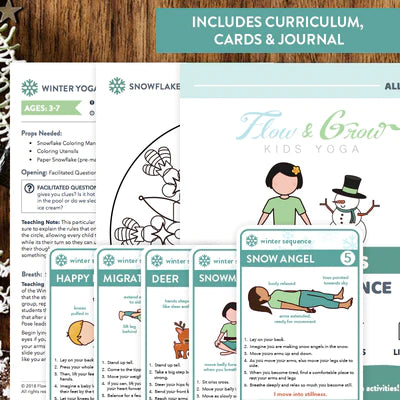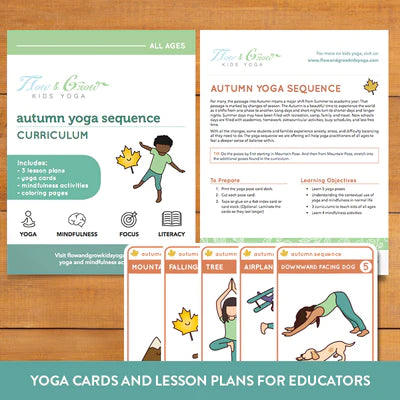Your Cart is Empty
22% off Automatically at checkout when you spend $5 of more!
22% off Automatically at checkout when you spend $5 of more!
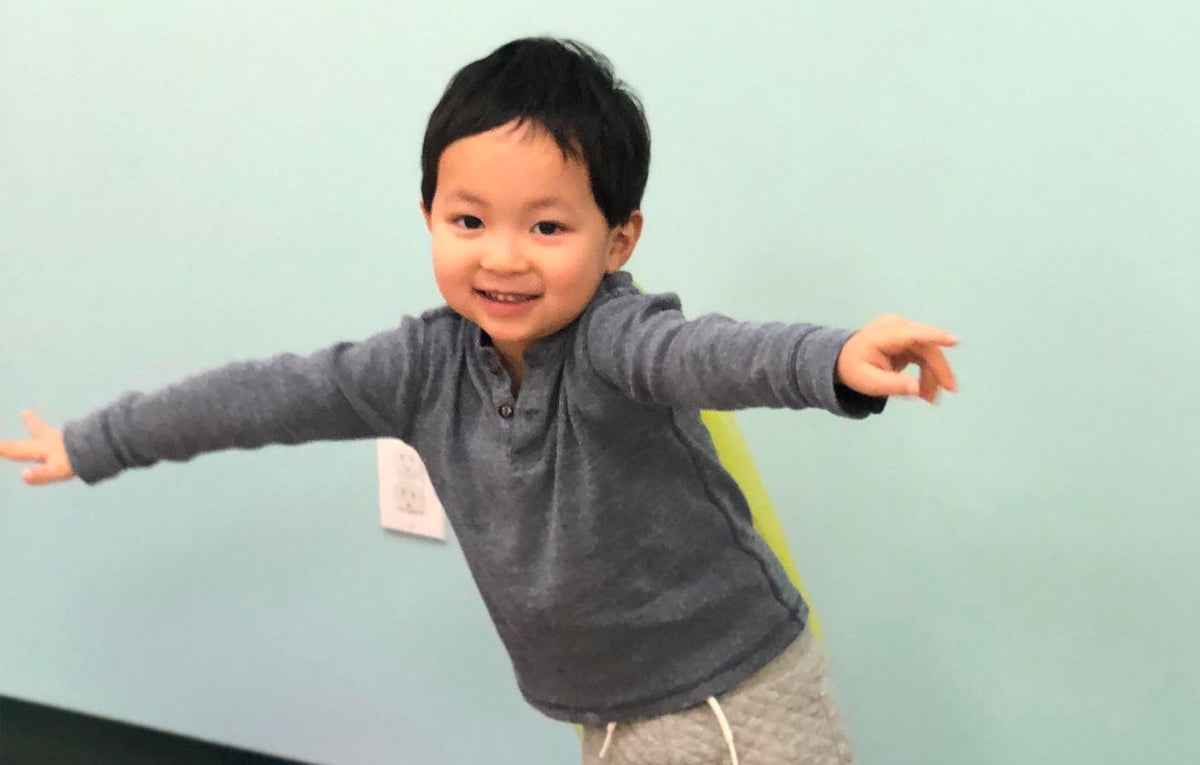
7 Trend Predictions For Kids Yoga in 2020
by Lara Hocheiser January 22, 2020 5 min read
Kids’ yoga is evolving. Don’t get stuck in the past. Come into the present. Experience the possibility of collaboration, creativity, fun, connection, and joy in your classes.
These are the 7 trends I am predicting to help to pioneer kids’ yoga in 2020. Will you shift your teaching to evolve with the industry? Follow the trends to stay on top of best practice.

1. Less forced quiet time, more quality silence
Following my article about Why I Quit Teaching After School Yoga Classes, and now lead project-based and play-based yoga and mindfulness steeped in self-expression and self-inquiry, forced silence is out!
We cannot ask children to be silent after a long school day of them barely speaking.
Without encouraging conversation to get to know each other, without talking through ideas, we can not expect comprehension, engagement, and interest.
We must create opportunities for every child to speak and be heard. We can understand who they are, what they like, how they understand the teachings we offer and truly connect by listening deeply. Then, because they have expressed themselves, the students can relax into silence during the special, meditative miracles of time.
Quiet reflective times are sacred and cannot happen throughout the entirety or the specialness goes away. Use silence intelligently.
2. More community-oriented togetherness
Sometimes asking each child to stay on their own mat is necessary to create a functional and safe class. It’s impactful to delineate and separate for moments of inner contemplation, reflection and focus.
However, creating community goals, standards, culture, group and partner poses (article coming soon!) and having fun together means more bonding, more love, more connection. We don’t need to avoid chatting together, playing together, singing together, moving together and dreaming up a perfect classroom climate together. We can design classes for more time doing just that and see the excitement on your students’ faces!
Collaborative games get everyone to focus and work together and can be meditative, too.
If you have a large space, you can consider doing stations. If you have tables you can move the children to the tables to do art projects for kids connected with the lesson. If you are comfortable, bring the children's’ mats together for partner work.
3. More creative expression
Kids yoga is a time for making statements about the self because we are looking into ourselves, getting to know ourselves, loving and accepting ourselves. Projects for kids like vision boards, allowing the children to do self-reflection journals, free art, creating mantras, and giving students time to teach or present to the class are some ways the children can express themselves.
For children, tangible art projects, audible mantra, and acting out dramas can help them internalize the important lessons from their mats.
Some benefits are they learn to see themselves and others, build empathy, give and get love, and have something to be proud of.
A challenge to our work as yoga teachers is to overcome the esoteric, intangibles and to create them as simple, tangible, comprehensible nuggets for children to understand on their level. What can kids say they did or learned in your class? Projects and free play bring meaning to the class and allow kids to express their thoughts, world view, and to do the most important work of childhood, PLAY!
4. Less friction
The pain of trying to get kids to listen diminishes when we engage them in child-appropriate ways. By doing all the above trends and shifting your classes to community-oriented, self-expression zones, where holy silence is a magical and timely pursuit, you can sit back and enjoy your teaching in a way you simply can’t by trying to control kids. Have the kids teach each other. Allow time for chatting and reflection out loud.
5. Noticing, Naming, Allowing, Being With
A favorite trend of mine, which can be done with all people at any age and ability is noticing emotions and then naming them. You can do this as play with younger children, as body-awareness exercises at any age, and in deep conversation as children get older.
I love to provide a physical experience and follow it with self-reflection questions. How did it feel to do belly breathing? What emotion do you feel right now? Then, what may be more important than naming is allowing. Allowing means not determining something you or a child experiences is wrong or negating its happening (negating ENRAGES me, we MUST empathize...I have so many stories of teachers dismissing children’s experience).
Teach the child to name and accept the emotion as part of their human experience. Then they can sit with the feeling and together you can navigate through it. Using the tools of yoga and mindfulness, we can manage our lives together and on our own.
6. Letting Go of Letting Go
There is a toxic phrase in yoga and that is LET IT GO. This phrase is so 2012 and can be dismissive of authentic life experience, trauma, and the difficult challenge we have as humans of being with ourselves and others during tough moments. Let it go statements, however well-intentioned, may make a child feel that their best is not enough. They may think, “if I can’t let it go, is there something wrong with me?” Instead, as we looked at in trend number 5, when we teach children to notice, name, allow and be with we all learn to move through difficult emotions. When we attempt to dissociate or numb or pretend hard things aren’t happening and force that on our students, we will out on the important work of processing and really noting the impact life can have. Over time, with more meditation and self-love, these difficult tsunamis will be mere low-tide waves in the ocean of our teaching
7. Making Space for Integrity and Authenticity (Stop copying, start being YOU)
Who cares what every other kid’s yoga teacher is doing? What YOU have to offer is what the children you practice with need. Yes, keep studying, yes, get mentorship, but at the end of the day make your own trends in kids yoga based on your talents, experience, and interests. When I get to be myself in my teaching, the best of me comes through. Teach leadership by loving yourself enough to do what you know best.
Are you ready to go out and make 2020 your best kids’ yoga teaching year yet?
If so,
Train with me:
West Hartford, ConnecticutMARCH 28-29, 2020Imagine Studios |
Milton Mills, NHAPRIL 18-19, 2020Milton Free Public Library |
Holliston, MassachusettsMAY 30-31, 2020The Yoga Exchange |
Leave a comment
Comments will be approved before showing up.
Also in Kids Yoga Blog

How Social and Emotional Learning and Yoga Help Kids Breathe Through Big Emotions
by Kane SEO April 21, 2025 4 min read
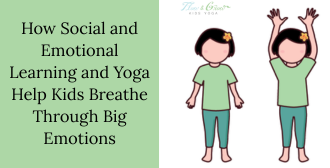
How Social and Emotional Learning and Yoga Help Kids Breathe Through Big Emotions
by Kane SEO April 14, 2025 4 min read
In classrooms and communities around the world, educators and parents alike are placing a growing emphasis onsocial and emotional learning. And for good reason: helping children understand, manage, and express their emotions in healthy ways is just as critical as teaching them to read or do math.

Power of Yoga for Kids: How It Helps Them Grow, Focus, and Thrive
by Kane SEO March 25, 2025 5 min read
In today’s fast-paced world, children are often exposed to stressors from a young age, whether it’s academic pressure, social challenges, or the overwhelming influence of digital devices. This can impact their physical, mental, and emotional well-being.
Ultimate Kids Year of Yoga Bundle
bundlespricey-contentdigital-resourcesearly-childhood-yoga-mindfulnesselementary-yoga-mindfulnesskids-yoga-resourcesmiddle-high-school-yoga-mindfulnessseasonal-yogayoga-cards
Ultimate Kids Year of Yoga Bundle
5 reviews
5.0 / 5.0
(5) 5 total reviews
$45.00
Ultimate Kids Year of Yoga Bundle
5 reviews
5.0 / 5.0
(5) 5 total reviews
$45.00
Kid’s Sun Salutation Yoga Cards
digital-resourcesearly-childhood-yoga-mindfulnesselementary-yoga-mindfulnesskids-yoga-resourcesliteracyunder-15yoga-cards
Kid’s Sun Salutation Yoga Cards
3 reviews
4.33 / 5.0
(3) 3 total reviews
$10.00
Kid’s Sun Salutation Yoga Cards
3 reviews
4.33 / 5.0
(3) 3 total reviews
$10.00
Yamas and Niyamas: Successful Relationships with Self & Others (tweens and teens)
pricey-contentdigital-resourceskids-yoga-resourceslesson-plansmiddle-high-school-yoga-mindfulnessmindfulness
Yamas and Niyamas: Successful Relationships with Self & Others (tweens and teens)
2 reviews
5.0 / 5.0
(2) 2 total reviews
$49.00$55.00
Yamas and Niyamas: Successful Relationships with Self & Others (tweens and teens)
2 reviews
5.0 / 5.0
(2) 2 total reviews
$49.00$55.00
